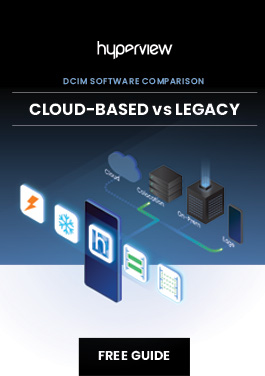Unlocking the Power of Building Management Systems in Data Centers
Integrating a building management system with data center infrastructure management is becoming increasingly important as businesses strive to optimize their resources. By connecting these two systems, organizations can gain a holistic view of their data center operations and make more informed decisions about how to best use energy and cooling.
With better visibility into the data center environment, organizations are able to reduce costs associated with power consumption, improve system uptime, and ensure compliance with industry standards. In this article we’ll explore the benefits of integrating building management systems (BMS) with data center infrastructure management (DCIM) software, discuss some of the challenges you may face when connecting them, and examine ways in which they can be used to monitor temperature, humidity and energy usage in real time.
1. The Benefits of Integrating BMS with DCIM Software
Integrating BMS building management system with DCIM software offers an in-depth understanding of the activities inside a data center. Operations teams can quickly evaluate temperature, moisture levels and energy consumption. They can also make sure their resources are used efficiently and sustainably while also gaining valuable insight into how the infrastructure is being employed. By using the BMS system with other monitoring and performance optimization tools, operations teams can maximize their efficiency while minimizing risk related to data center management.
Additionally, DCIM software can provide valuable insights into energy consumption patterns and usage trends that can be used to optimize operations further. DCIM software can also be used to ensure compliance with industry regulations and standards.
2. Challenges of Connecting the Two Systems
Integrating BMS with DCIM software can be a complex process and requires careful planning. Organizations must ensure that their systems are properly configured to communicate the necessary data between the two systems. To make this easier, DCIM software vendors are increasingly providing out-of-the-box integrations. However, some of them may be less than adequate. In the case of Hyperview, their REST APIs are fully documented and available to users to develop their own integrations to meet their specific needs.
Security measures should also be put in place to protect the data, such as creating secure policies for controlling access and data sharing. Additionally, any legacy BMS equipment used may not be compatible with modern data center environments or protocols, meaning there could be significant technical challenges along the way. Finally, organizational processes must also be adapted to ensure all stakeholders are working together towards common goals related to system integration and performance optimization.
3. Monitor Temperature, Humidity, and Energy Usage
Integrating a building management system with data center management allows organizations to track and monitor temperature, humidity, and energy usage in real time. This can be done through the use of sensors and other monitoring devices that are connected to the BMS system. By utilizing this technology, businesses can quickly identify when unexpected changes occur in their environment and take corrective action before the problem escalates. Additionally, organizations can use these systems to develop predictive models for understanding how changes in temperature and humidity will affect their infrastructure and adjust resource utilization accordingly.
4. Compliance Considerations for Integrated Systems
When integrating BMS with DCIM, organizations must consider various compliance regulations and standards. For example, the Payment Card Industry Data Security Standard (PCI DSS) requires that businesses protect cardholder data from unauthorized access or alteration throughout its lifecycle. To comply with this requirement, organizations should ensure that only authorized personnel have access to networked building systems and that data is encrypted whenever possible. Additionally, organizations must ensure their DCIM software meets the necessary industry standards for secure operation and maintenance.
5. Making Informed Decisions With Better Visibility into Your Data Center
A greater level of visibility into the data center environment allows organizations to operations teams to make better-informed decisions related to resource utilization, environmental control and compliance. DCIM software can be used to monitor temperature, humidity and energy usage and give businesses valuable insights into their operations that can be used for predictive analysis and cost savings. Additionally, DCIM software can also ensure compliance with industry regulations and standards. With the right DCIM solution, organizations can optimize their data center operations and maximize efficiency.
Conclusion
Integrating BMS with DCIM software is a powerful way for organizations to gain greater visibility into their data center environment and optimize their operations. DCIM software can be used to monitor temperature, humidity and energy usage in real time and provide valuable insights into resource utilization. Additionally, DCIM software can also ensure compliance with industry regulations and standards. By taking the time to connect these two systems, businesses will be well-positioned to optimize their data center operations and maximize efficiency.
If you would like to learn more about the difference between next-generation and legacy DCIM softwares, download this free guide.

The post Unlocking the Power of Building Management Systems in Data Centers appeared first on Hyperview.
*** This is a Security Bloggers Network syndicated blog from Hyperview authored by Rajan Sodhi. Read the original post at: https://www.hyperviewhq.com/blog/unlocking-the-power-of-building-management-systems-in-data-centers/



